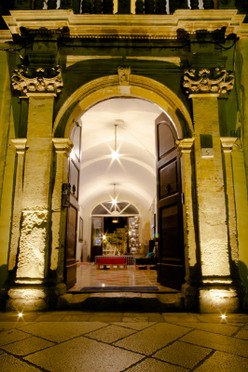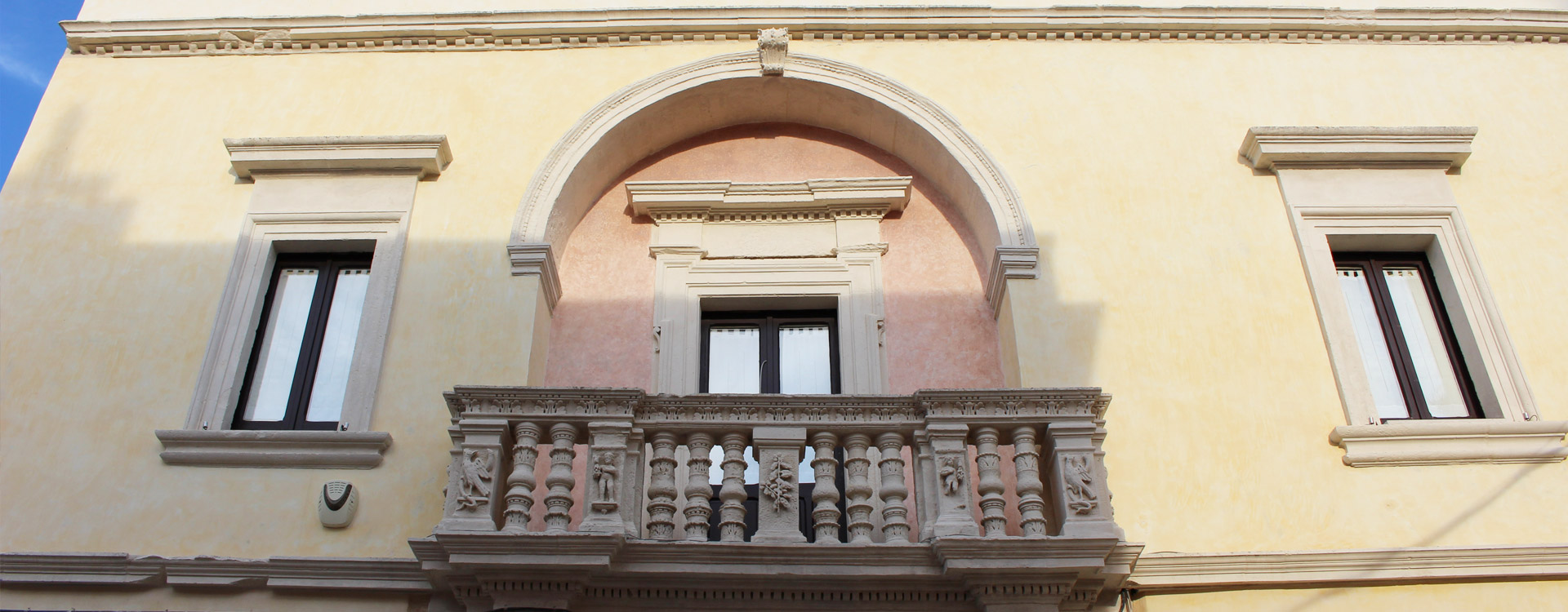
Palazzo Raho is located in the historic centre of Lequile, a town a few kilometres from Lecce, in Cupa’s Valley. Lequile is one of the towns around Lecce in the South of the city. The building is an example of a transformation from a house with a courtyard to an aristocratic residence and this transformation is not so usual in Salento cause of the recognition of the original construction and the aesthetic effect. Nowadays, the building has a continuous and solid front by the side of the main road that crosses Lequile’s ancient residential complex between Piazza Castello and Piazza San Vito which constitute the most important part of the historic centre. What was originally a courthouse was transformed into a palace in the mid-16th century, due to the arrival of the ancient and noble Raho or De Raho family, a Neapolitan family of Norman origin. For this reason, the construction of the palace’s front and the extension works of lower rooms and the added storey date back to the 16th century. Until the mid-16th century, two different independent courtyard houses with entrances in succession could exist in the North of Piazza San Vito. The transformation made by Raho gives to the building the current appearance with a homogeneous front by a typical local stone called pietra leccese. The main body of the building with two floors has an imposing portal embellished by decorated capitals with zoomorphic and vegetable patterns. An alcove balcony is on the top of the portal, and it has a little parapet with a banister with a great effect since much of front’s sculptural decoration is concentrated there. On the first floor, in addition to the alcove on the portal, there are three windows surrounded by simple cornices which look like the three ancient lower windows. Sideways, there is balcony with an ancient artistic railing made by cast iron introduces a second alcove niche facing Piazza San Vito. On the main front, to the left of the portal, there is a niche with a fresco, dating back to the end of 16th century or in the early 17th century, it represents the Virgin with the infant Jesus and Saint Joseph on the side wall and the dove of the Holy Spirit on the vault. The niche is in a larger fresco, dating back to the same period, which represents a temple. The interior of the building reflects the clear distinction between the most ancient area and the noble residence. On the ground floor, the roofs are small and defined with a simple architecture while on the first floor the spaces are larger and higher, and the roofs are more elaborated and show the remains of the ancient painting and decoration dating back to the first decade of the 17th century. The transformations of the original complex make the palace an important architectural point of reference for Lequile an extremely cultural interesting evidence, recognized as a building of historical and artistic significance by the Ministry of National Heritage and Culture.


